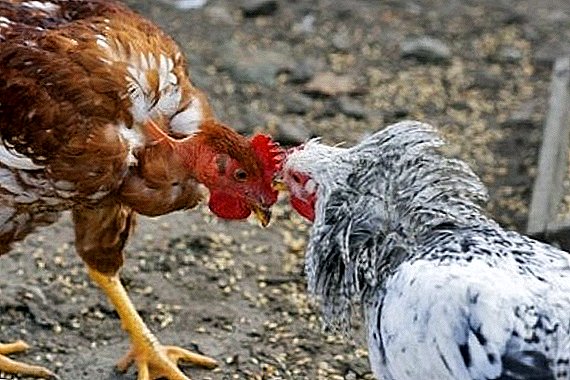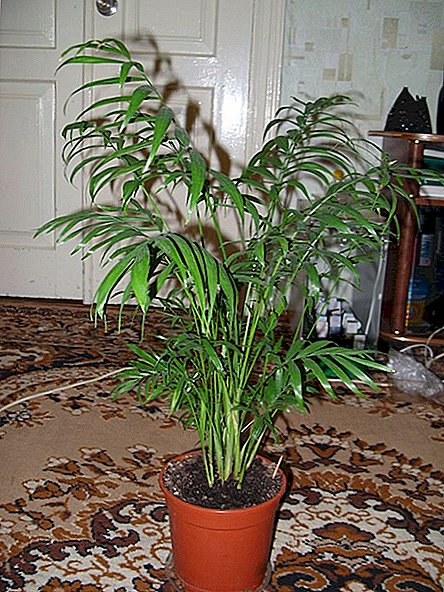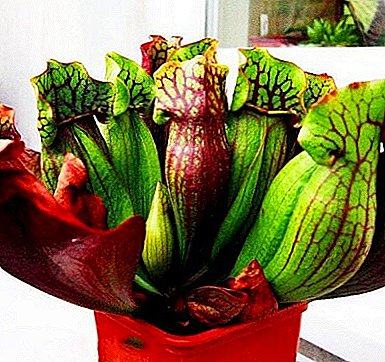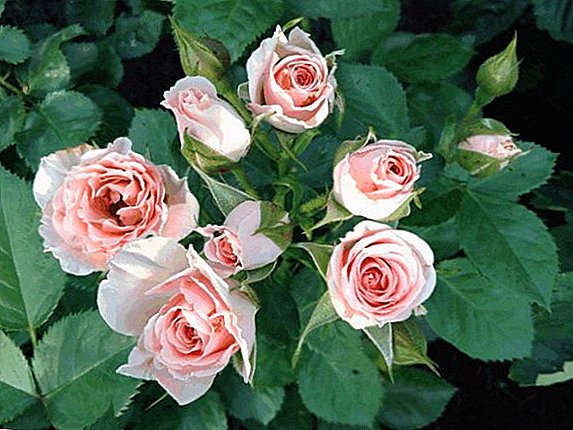 Over the centuries, the cultivation of a huge number of varieties of roses, which are now divided by the World Federation of Horticultural Societies into classes and groups. Roses "spray" belong to one of the relatively recently appeared groups. These flowers are very loved by florists and are often the basis of wedding bouquets. Let's see what it is.
Over the centuries, the cultivation of a huge number of varieties of roses, which are now divided by the World Federation of Horticultural Societies into classes and groups. Roses "spray" belong to one of the relatively recently appeared groups. These flowers are very loved by florists and are often the basis of wedding bouquets. Let's see what it is.
Roses "spray"
This group of varieties was singled out from the floribunda group, whose varieties are widely used for decorating personal plots and are very loved by landscape designers. This division occurred recently, in the second half of the twentieth century. The group under consideration is quite diverse and includes both stunted bushes belonging to the type of border roses and higher plants.

A characteristic feature of roses "spray" are relatively small (up to 7 cm in diameter) flowers, which bloom in large quantities on one branch - there may be up to a dozen of them there. Plants of this group can grow up to 90 cm, but more often they are compact half-meter bushes, decorated with inflorescences of small flowers.
Did you know? Cultivation of the rose began in ancient Rome, and in ancient Roman sources recorded descriptions of at least 10 varieties of this plant.
Popular varieties
Breeders deduced many varieties of spray roses, differing in various colors, height and size of flowers. Some popular varieties are described below.
Learn more about rose varieties such as Gloria Day, Prince de Monaco's Jubilee, William Shakespeare, Mary Rose, Pierre de Ronsard, Sophia Loren, Bonika, New Dawn, "Chopin", "Abraham Derby", "Graham Thomas", "Blue Perfume", "Pink Intuition", "Falstaff", "Pierre de Ronsard", as well as Roses Kerio, and Cordes.
"Tamango"
This grade different sprawling busheswhose height does not exceed 50 cm. The flowers are quite large, up to 7.5 cm in diameter. They have a rich red color and a pronounced smell. The plant is resistant to winter cold and diseases, flowering continues until frost.

"Allegria"
Shrubs "Allegria" can reach 70 cm height. The flowers are small, up to 5 cm in diameter, have an orange-pink color, the smell is almost absent. Flowering continues throughout the season. "Allegria" is characterized by increased resistance to low temperatures and diseases.

"Snow-dance"
Height bushes "snow-densa" reaches 75 cm. Flowers, with a diameter up to 5 cm, can have a white or gentle greenish color. They have almost no smell. This plant blooms continuously, from May to autumn frosts. Like many members of this group, "Snowdance" tolerates frosts well and is resistant to diseases.

"Lydia"
This variety is bred recently in the Netherlands. Description of the rose: the height of the bush does not exceed 70 cm, the flowers are pink, from light to saturated colors, their diameter reaches 5 cm, the fragrance is weak, but tangible. Flowering continues throughout the season and is characterized by profusion. "Lydia is resistant to frost and disease.

Did you know? The world's largest rose grows in the United States, in the city of Tombstone, which is located in Arizona. This is a bush with a height of 2.75 meters, with a girth of the base of about four meters and a crown area of 740 square meters. m. During the flowering period, it blooms more than 200 thousand small flowers. This rose was planted in 1885. Called she "Lady banks".
"Typhoon"
Typhoon Shrubs reach 70 cm in height. The flowers are orange, bright, with a diameter of 5 cm. The "Typhoon" rose blooms until late autumn. Little prone to illness and cold.

"Shine"
Rose "Shine" Bred in the United States, in the 70s, and are considered one of the best varieties of yellow roses. The height of the bushes does not exceed half a meter, flowers are usually 4 cm in diameter. The aroma of their pronounced. Blooms "Shine" throughout the season. Resistance to cold and disease is above average.

"Victoria"
This variety has abundant flowering, up to one and a half dozen flowers with diameters up to 5 cm can form on one shoot. The bush reaches 60 cm in height, the flowers have a delicate pink color, but eventually fade to a white-pink color. "Victoria" tolerates frosts and is not susceptible to diseases.

"Star and Stripes"
The original name of this variety of roses "Stars'n'Stripes". Usually the height of the bushes does not exceed 50 cm, but it may exceed this limit. The spikes are almost absent. The flowers are small, catchy, with a "striped" color - they alternate crimson and white stripes and spots. The diameter is usually 2-3 cm, but can reach 5 cm. The aroma of flowers is sweet, pronounced. "Stars'n'Stripes" blooms all season.

Important! Sort "Stars'n'Stripes" tolerates frost well, but its resistance to powdery mildew is low.
Fire Flash
The height of the bushes "Fire Flush" reaches 70 cm. The flowers are variegated, bicolor, up to 5 cm in diameter, combine red and yellow color, do not fade in the sun. Flowering is long, until the autumn frosts. Fire and illnesses are very stable.

Fire King
This plant has a rather high bushes, up to 80 cm in height. Its flowers are bright red, the diameter reaches 6 cm. The fragrance is barely visible. Plant blooms all season. Fire King is resistant to disease and cold.

Features of the growing group
Almost all varieties of roses "spray" unpretentious, planting and caring for them are not difficult for gardeners. For their landing they prepare a pit of 40 by 40 cm in size, its bottom is covered with expanded clay to ensure drainage. When planting in the pit is added compost. For normal plant development, light, slightly acidic soil is preferred.

Landing is desirable well-lit, but slightly shaded places, protected from the wind. The best landing time is the beginning of May. Watering should be moderate, but regular. For the winter, with all the frost resistance, it is desirable to cover the plants with spruce leaves. In the spring, diseased and extinct shoots are pruned, in the summer - shoots that grow inside the bush, in the fall - weak shoots that are clearly unable to withstand severe cold.
Important! In the spring it is desirable to feed the plants with nitrogen fertilizers. At the end of flowering, it is important to make potash-phosphate fertilizers.
So, as we have seen, spray roses differ not only in excellent external data, but also unpretentiousness, and also resistance to diseases. This group of varieties is just perfect for decorating the infield. Spectacular inflorescences of these bushes look great both in bouquets and flower beds.
And also find out what the 10 most common mistakes gardeners make when growing roses












